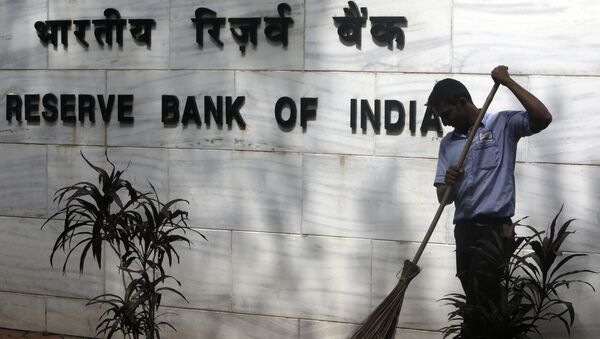Inflationary pressure is building up in the Indian economy. The country's retail inflation, measured as the Consumer Price Index (CPI), a major yardstick for macroeconomic policy decisions, has breached the 6 percent limit decided upon jointly by the government of India and the country's apex bank, the Reserve Bank of India (RBI).
In June, the country's retail inflation was 6.10 percent compared with 5.8 percent in March."India's retail inflation in June last year was almost half at 3.18 percent. This is despite the fact that demand in the Indian economy has been completely decimated due to the impact of the COVID-19 pandemic".
According to the RBI, inflation in June skyrocketed due to high prices of transport, communication, personal care, tobacco, education, and food. This June, food inflation stood at 7.3 percent, almost three times higher than in June 2019 (2.25 percent).
Owing to the high inflationary pressure on the Indian economy, the country's top bank opted not to reduce the key lending rates during the monetary policy announcement last week, despite a desperate need to keep capital costs low to push economic growth.
So what's causing the inflationary pressure in the Indian economy, when demand is low? Economists feel that the reason behind high inflation is the supply side disruption due to the pandemic.
"Several instances have come to the fore where there is adequate production. But the produce is not reaching the consumers due to supply side disruptions creating shortage in pockets leading to a localised build-up in inflation", economist Sunil Sinha, the director of public finance at India Ratings – a Fitch Group Company – told Sputnik.
Sinha pointed out that supply side disruption due to the pandemic is the principle cause of the inflation differential between the wholesale and retail sectors.
"When you go and capture the prices at the retail end or the consumer end, they tend to be higher. That’s why the wholesale price index is in the negative zone, while consumer price has overshot the 6 percent mark. So, this is basically due to supply side problems caused due to the pandemic and the COVID-19-led lockdown", Sinha added.
In fact, while announcing the monetary policy on 6 July, the RBI also pointed to the supply side constraints as being one of the reasons for the firm increase in inflation. The top bank also opines that higher domestic taxes on petroleum products will add to the price pressure going forward.
In its monetary policy statement, the RBI said that "a more favourable food inflation outlook may emerge as the bumper harvest eases prices of cereals, especially if open market sales and public distribution off-take are expanded on the back of significantly higher procurement. Nonetheless, upside risks to food prices remain. The abatement of price pressure in key vegetables is delayed and remains contingent upon normalisation of supplies".
The RBI expects inflation to remain elevated until September as is evident from the monetary policy statement.
"The inflation outlook for non-food categories is, however, fraught with uncertainty. Higher domestic taxes on petroleum products have resulted in elevated domestic pump prices and will impart broad-based cost-push pressures going forward. Volatility in financial markets and rising asset prices also pose upside risks to the outlook. Taking into consideration all these factors, headline inflation may remain elevated in Q2:2020-21 (July – September 2020)", the statement said.
The Indian economy was slowing down even before the pandemic hit the country on account of multiple factors such as weaknesses in the financial system.
From a high of over 8 percent in early 2018, India’s economic growth has since slumped to 3.1 percent (January – March 2020). For the current financial year (April 2020 – March 2021), the Indian economy is projected to fall into a recession, with growth projected to contract by at least 5 percent.
To help the economy and businesses out of the COVID-19-induced slowdown, the Indian government has rolled out a $266 billion economic package. The country's top bank RBI, for its part, has also released liquidity worth $127.60 billion since March of this year when the pandemic-driven national lockdown was put in place.




